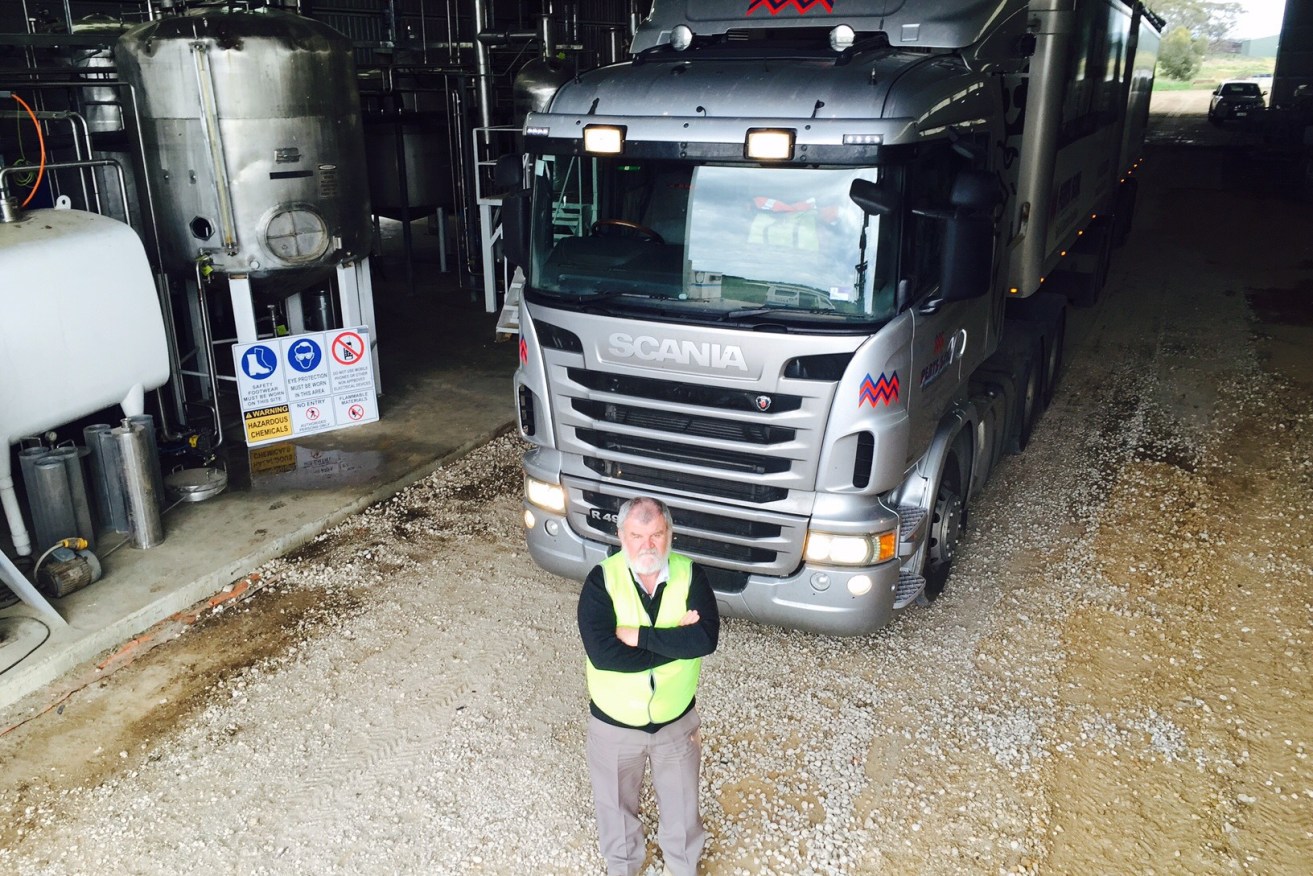Creating biodiesel out of ‘dirty water’
A fleet of trucks is running around Adelaide fuelled by liquid organic waste and the company behind the innovation sees the potential to expand into commercial biodiesel production.

Peats managing director Peter Wadewitz. Image supplied
Earlier this year Peats Soils and Garden Supplies began making biodiesel at its plant in Langhorne Creek by converting FOG – the fat, oil and grease produced by restaurants, businesses and supermarkets. FOG is just one component of the “dirty water” that is collected by interceptors to keep it out of the trade waste system.
More than 50 million litres of “dirty water” is produced in Adelaide each year, and for 45 years Peats has been using some of it to manufacture garden compost. However, FOG has greater potential value as an alternative feedstock for biodiesel production.
Peats now wants to begin commercial trials and has won $10,000 to help develop its concept as a finalist in the State Government’s Low Carbon Entrepreneur prize, which is part of the Adelaide to Zero Carbon Neutral Challenge.
“At the moment we are still building production capacity so we that we can completely fuel all of our trucks with our own biodiesel but it would not require much re-configuration to produce more than we can use ourselves,” said Peats’ Commercial Manager for BiobiN Technologies John Hogarth.
“The only limitations are the size of the plant and access to enough dirty water. There would be no shortage of buyers. We’ve only spoken to a couple of people and we could have sold what we produce 10 times over.”
The Peats plant, known as a third generation biodiesel plant, was developed in partnership with the University of Adelaide, with some funding from the Australian Research Council. Hogarth knows of a few plants around the world that are similar in principle but says the concept is still relatively new.
“Things fell into place for us about three years ago,” he said. “We knew about the idea but didn’t know anyone had really cracked it, only to discover that the research was being done at a university just down the road.”
Owning or having viable access to a composter or organic recycler is a pre-requisite for success, because all components of the “dirty water” have to be sustainably used or disposed of, not just the FOG. Hogarth also acknowledges that that is one limitation on quick growth of a commercial industry.
Beyond that, creating the plant is not difficult, and while requiring money upfront it can be delivered at a small enough scale to make it economically viable. That opens the way to build plants in regional areas to convert regional waste.
Hogarth said the materials used in the construction of the initial plant at Langhorne Creek were “not dissimilar to in the wine industry uses in terms of tanks and piping”.
“Most of the innovation activity is at the front end – the pre-treatment to get the source material to a suitable level for production to biodiesel,” he said. “Once it’s at that level the biodiesel process at the back end is quite similar to what’s seen with more conventional tallows and materials. There’s a lot more chemistry that happens at the front and a little extra to finish.
“There are some custom pieces of equipment in our initial plant but other things were reappropriated as required and we used a bit of bush ingenuity to adapt things.”
The plant is capable of producing pure biodiesel (B100) and that will happen in the near future. Currently Peats creates its own biodiesel and ethanol blends (commonly B10 or B20) on site. Once production increases beyond its own needs, it will be able to supply B100 to a distributor for mixing.
Peats Soils and Garden Supplies and 10 other finalists will be in Adelaide next week as part of the Adelaide to Zero Carbon Challenge Design Week. The week includes a free live demonstration day where the public can meet the finalist teams to learn more about their projects in the lead up to their public pitches and the winners announcement on Friday 21 October.
Solstice Media has partnered with the South Australian Government to provide information about the transition to a low-carbon economy. Read more stories like this here.




